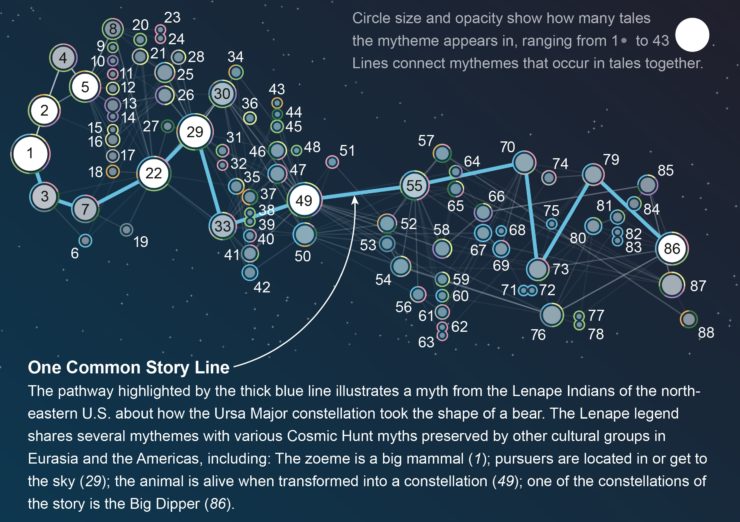Psychologist Carl Jung believed that many cultures across the globe produced similar myths due to a sort of unified subconscious, the idea that deep down in our collective psyche, we all embraced the same symbols in an effort to explain the world. But what if it were far more simple than that? What if these linked myths merely migrated along with the people who told them? One scientist has provided strong evidence to that tune, piecing together together a global mythic tapestry that is thousands of years in the making.
Over in Scientific American, doctoral candidate Julien d’Huy has used computer models and phylogenetic analysis to track the movement of mythic tales across cultures and continents, over thousands of years. d’Huy starts with the example of the classic “Cosmic Hunt” myth–a story where a person or persons track an animal into the forest, where the animal escapes by becoming one of the constellations in the sky–and explains that Jung’s idea of an intrinsic, embedded concept of specific myths and symbology doesn’t hold up across the board:
If that were the case, Cosmic Hunt stories would pop up everywhere. Instead they are nearly absent in Indonesia and New Guinea and very rare in Australia but present on both sides of the Bering Strait, which geologic and archaeological evidence indicates was above water between 28,000 and 13,000 B.C. The most credible working hypothesis is that Eurasian ancestors of the first Americans brought the family of myths with them.
This led d’Huy to create a phylogenetic model, more commonly used by biologists to track evolution, to create a myth tree that tracked the evolution of a single story. By the d’Huy had identified 47 versions of the story and 93 “mythemes” that cropped up throughout these various versions at different frequencies. Tracking these changes made it possible to hypothesize when certain groups migrated to different areas based on the introduction of new story mythemes and changes made to the tale. d’Huy’s model showed that “By and large, structures of mythical stories, which sometimes remain unchanged for thousands of years, closely parallel the history of large-scale human migratory movements.”
Other myths were also tested using this model, yielding fascinating results. The Pygmalion story, the Polyphemus myth, and tales of dragons and serpents all showed evidence of the migratory patterns of humanity dating back thousands of years. It is possible that these models will help future scholars to identify ancestral “protomyths,” or the base tales that many of our widespread myths herald from.
Read more about Julien d’Huy’s research over at Scientific American.










